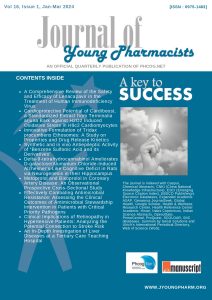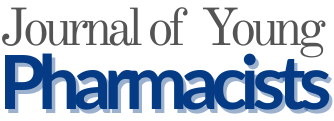Published: 06 June 2025 Review Article
Published: 06 June 2025 Review Article
Published: 06 June 2025 research-article
Published: 06 June 2025 Review Article
Published: 06 June 2025 Review Article
Published: 06 June 2025 Review Article
Muhammad Abid Mustafa,
Namra Rasheed,
Maryam Ayesha,
Qurat ul Ain,
Maryam Mughal,
Muhammad Fahad,
Hamda Shakir,
Ansa Ijaz,
Muhammad Ali Tahir,
Meer Muhammad,
Moiz Ali and
Areej Kainat Journal of Young Pharmacists, 17 (1), 36-45.
DOI: 10.5530/jyp.20251440 Published: 06 June 2025 Review Article
Published: 06 June 2025 Review Article
Published: 06 June 2025 Review Article
Published: 06 June 2025 Review Article
Published: 06 June 2025 Original Article
Published: 06 June 2025 Original Article
Published: 06 June 2025 Original Article
Published: 06 June 2025 Original Article
Published: 06 June 2025 Original Article
Published: 06 June 2025 Original Article
Published: 06 June 2025 Original Article
Published: 06 June 2025 Original Article
Published: 06 June 2025 Original Article
Published: 06 June 2025 Original Article
Published: 06 June 2025 Original Article
Published: 06 June 2025 Original Article
Published: 06 June 2025 Original Article
Published: 06 June 2025 Original Article
Published: 06 June 2025 Original Article
Published: 06 June 2025 Original Article
Published: 06 June 2025 Original Article
Published: 06 June 2025 Original Article
Published: 06 June 2025 Original Article
Published: 06 June 2025 Original Article
Published: 06 June 2025 Original Article
Published: 06 June 2025 Short Communication
Published: 06 June 2025 Case Report

